Speaker
Description
In the quest for the Lepton Flavour Violation (LFV) the MEG experiment at the Paul Scherrer Institut (PSI) represents the state of the art in the search for the charged LFV $\mu^+ \rightarrow e^+ \gamma$ decay. MEG set the most stringent upper limit on the BR$(\mu^+ \rightarrow e^+ \gamma) \leq 4.2 \times 10^{-13}$ ($90\%$ confidence level), imposing one of the tightest constraints on models predicting LFV-enhancements through new physics beyond the Standard Model. An upgrade of MEG, MEG II, was designed and it is presently in the final commissioning phase, aiming at reaching a sensitivity level of $6 \times 10^{-14}$. The Cylindrical Drift CHamber (CDCH) is a key detector in order to improve the $e^+$ angular and momentum resolutions at 6.5~mrad and 100~keV/c level. CDCH is a low-mass single volume detector with high granularity: 9 layers of 192 drift cells, few mm wide, defined by 12000 wires in a stereo configuration for longitudinal hit localization. After the assembly phase, CDCH was transported to PSI and it has been integrated into the MEG II experimental apparatus since 2018. The commissioning phase lasted for the past three years with continuous improvements both on the hardware and software side. After a conditioning period, the operational stability was reached in 2020 and the complete read out electronics is tested for the first time in 2021. The 2020-2021 data and results will be presented in view of the physics data taking in the upcoming three years.
| Primary experiment | MEG II |
|---|
